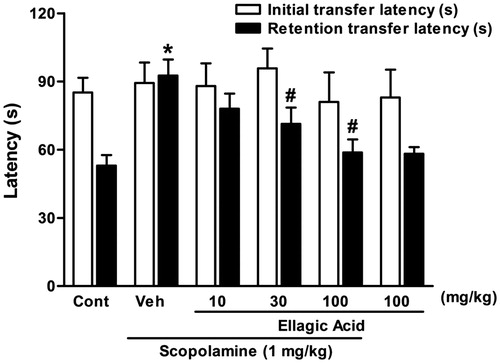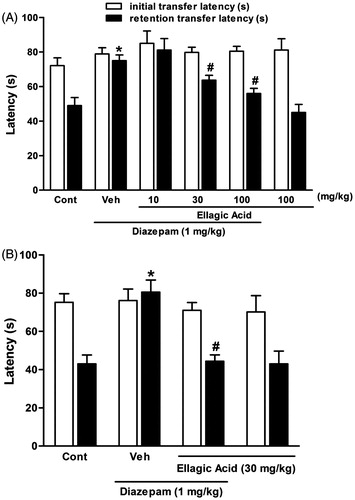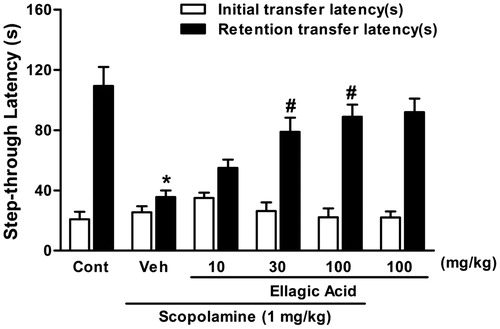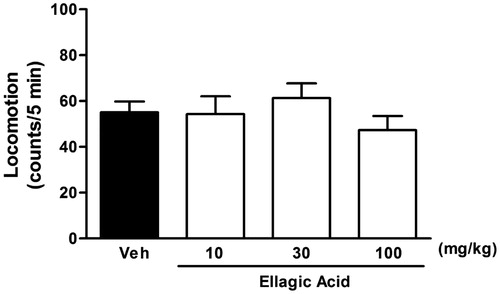Figures & data
Figure 1. Effect of a single administration of ellagic acid (EA) on scopolamine-induced cognitive impairment using elevated plus maze paradigm. EA (10, 30 and 100 mg/kg, i.p.) or vehicle (Veh) were administered to mice 30 min before the acquisition trials. Memory impairment was induced by scopolamine treatment (0.4 mg/kg, i.p.). Acquisition trials were carried out 30 min after scopolamine treatment. Retention trials were carried out for 5 min 24 h after the acquisition trials. Data represent means ± SEM (n = 8 in each group). *versus the vehicle control group, #versus the scopolamine-treated group (one-way ANOVA followed by Dunnett's test).

Figure 2. Effect of a single (panel A) and chronic (panel B) administration of ellagic acid (EA) on diazepam-induced cognitive impairment using elevated plus maze paradigm. For acute experiment, EA (10, 30 and 100 mg/kg, i.p.) or vehicle (Veh) were administered to mice 30 min before the acquisition trials and for chronic experiment, EA (30 mg/kg, i.p.) or vehicle (Veh) were administered to mice for 10 consecutive days and the last dose was given 30 min before the acquisition trials. Memory impairment was induced by scopolamine treatment (0.4 mg/kg, i.p.). Acquisition trials were carried out 30 min after scopolamine treatment. Retention trials were carried out for 5 min 24 h after the acquisition trials. Data represent means ± SEM (n = 8 in each group). *versus the vehicle control group, #versus the scopolamine-treated group (one-way ANOVA followed by Dunnett's test).

Figure 3. Effect of a single administration of ellagic acid (EA) on scopolamine-induced memory deficits in the passive avoidance task. EA (10, 30 and 100 mg/kg, i.p.) or vehicle (Veh) were administered to rats 30 min before the acquisition trials. Memory impairment was induced by scopolamine treatment (0.4 mg/kg, i.p.). Acquisition trials were carried out 30 min after scopolamine treatment. Retention trials were carried out for 5 min 24 h after the acquisition trials. Data represent means ± SEM (n = 8 in each group). *versus the vehicle control group, #versus the scopolamine-treated group (one-way ANOVA followed by Dunnett's test).


